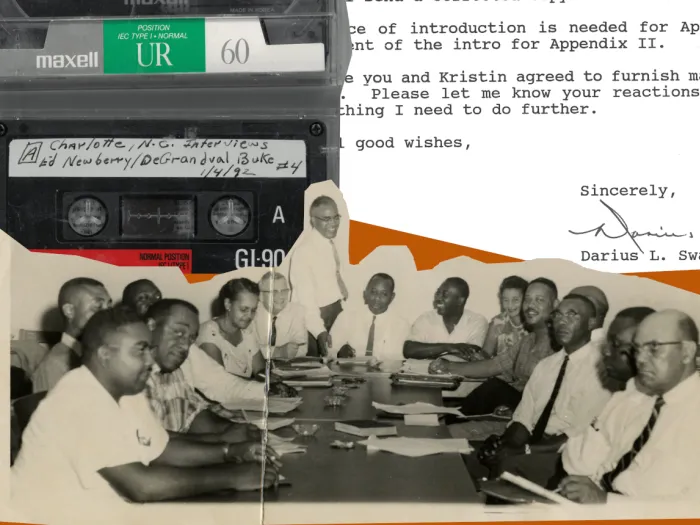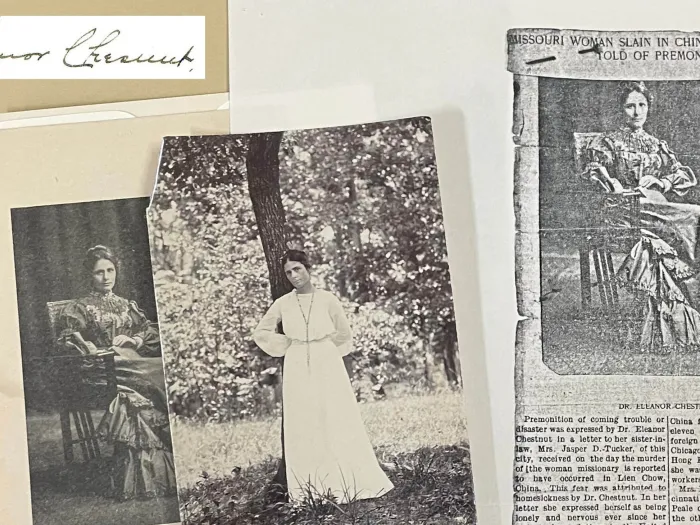In 2023, PHS was awarded a grant from the National Endowment for the Humanities to digitize 22,500 photographs and supporting documents from the Religious News Service Photograph Collection. Learn more about the project.
The Religious News Service Photograph Collection includes images that were shot between 1945 and 1982. To kick off the RNS Photographs Digitization Project, we prioritized appraising and scanning images from 1964—a banner year in American history during a decade that marks a sea change in American life. The assassination of a President, the Civil Rights Movement, the Cold War, Vietnam, feminism, gay liberation—it felt like the world was changing.
Even the prototypically conservative Catholic Church was evolving. The Second Vatican Council was at its midpoint, slowly but steadily moving toward the transformational reforms it would implement in 1965. There was a pope newly elected at the end of 1963. Sometimes called the Pilgrim Pope for his unprecedented travel outside of Vatican City, Paul VI continued the work of his predecessor to try to make the Church relevant to modern life and made ecumenical outreach central to his reign.
And like so many other women in the 1960s, Catholic nuns were reimagining their roles in a changing society.

Lay woman is parochial school principal, 1964. [islandora:350164]
Imagine a Catholic nun. If your mental picture included a floor-length black habit and a white wimple leaving only a woman’s face and hands exposed, that’s no surprise. The remote yet regal figure of the nun looms large in the popular imagination, in part because of their ubiquity on the margins of popular culture.
Their iconic, anachronistic clothing makes nuns immediately recognizable in a way that’s perfect for a quick joke or ironic juxtaposition. One of my first encounters with this trope was in the film Princess Diaries, when two nuns on the streets of San Francisco call 911 to report a traffic accident. There’s already the implication of a joke in the appearance of these implicitly traditional women in a movie about how modern girls struggle to fit into rigidly traditional roles, and the fact that one carries a cell phone in her seemingly medieval garb. And then the joke lands when the first nun says that the 911 operator has put her on hold, and her companion exclaims, “Oh, for the love of God!” with the same sort of impious exasperation as our heroine. Perhaps these nuns are not so straight-laced as they appear—and perhaps our heroine can find a way to fit into her assigned role without losing her modern sensibility, too.
But that’s popular culture. In real life, most nuns haven’t looked like that for a long time, the same way women typically don’t wear the pantyhose and tweed skirt suits with pearls that we imagine of previous generations. But when we think about the feminist movement in the 1960s that changed how most women dressed and acted in society, we don’t remember that nuns were part of it, too.
In 1964, the stereotypical habit was still de rigeur for American nuns.

Dolls promote religious vocations, 1964. [islandora:348334]
These dolls in accurate costumes, handmade by the nuns themselves, were used to advertise religious orders to young Catholics in Ohio. And yet, RNS’s coverage of nuns stresses how active and modern these women are.

Taking a 'break' from classes, 1965. [islandora:151654]
Like the prototypical feminist, nuns participate in stereotypically masculine things like sports, both as coaches and players. Their “flowing habits do not seem to be a handicap” as these novitiates bike and roller skate for fun between college classes in New Orleans.

Sister's a slugger, 1934. [islandora:349103]
The captions sometimes highlight how nuns are taking the place of men—not only is “slugger” Sister Mary Josanna doing something we don’t imagine nuns do, “Wisconsin fans may have to get used to nuns’ baseball” if the rumors are true that their pro team is leaving Milwaukee.

Three nuns teaching future priests, 1964. [islandora:349132]
Nuns in Baton Rouge expanding their teaching vocation to help train future priests is “in keeping with the changing status of women in general.”
Male seminarians are helping renovate an apartment for nuns working in Detroit, but RNS focuses on a nun with an apron tied over her habit “doing it [her]self.”

Nothing like doing it yourself, 1964. [islandora:349115]
At the same time, 1964 sees a shift away from the iconic image of a nun in floor-length black habit. In keeping with the changing times and the modernizing Church, many orders began considering a change to their centuries-old uniforms.

Another order modernizes religious garb, 1964. [islandora:353762]

Proposed habit for Sisters of Mercy, 1964. [islandora:353703]
In a thoroughly modern fashion, they’re testing out new options and will vote on whether to adopt them. That the nuns themselves are figured as the deciders of what they will wear, rather than their bishops or the Pope in Rome, implies their likeness to other women asserting themselves and their autonomy in modern American life.
In addition to the general climate of change, these reforms are contextualized as rational concessions to the work nuns do. For instance, the addition of a grey summer-weight habit “designed for warmer climates” only makes sense for Benedictines from New York going on mission to Brazil.

Benedictine nuns ready for any Brazil weather, 1964. [islandora:350180]
And prefiguring the decline of habits into near-obscurity in the United States, some nuns were considering ditching them entirely.

Nuns in experimental secular garb, 1964. [islandora:356599]
These Ursulines are part of a pilot project to help decide “how far [they] should go in streamlining” their order’s uniform. Their conservative but unremarkable clothing is a “liberalized” version of Catholic sisterhood, one perhaps more appropriate to teaching in a modern Catholic high school of the 1960s.
RNS’s heavy coverage of Catholic nuns is no doubt in part due to the striking image of women in medieval habits at work and at play in the modern world. They did remarkable things as women in the 1960s. Nuns established hospitals and schools in remote parts of the world, got advanced degrees, worked in war zones, marched in demonstrations—but we don’t remember them as part of the women’s movement. The clothes that made them stand out to RNS photographers and editors also marked them as part of an institution that would only modernize and liberalize so far, and no further. Religious lives and the cultural paradigms they imply are hard to reconcile with the popular understanding of feminism.
When we think of nuns today, we tend to imagine figures of authority, tradition, conservatism. No doubt some were and still are. And yet religious orders are as deeply intertwined with their cultural contexts as any other facet of society. Like other American women, nuns of the 1960s were testing the boundaries of what women could be like and what they could do in society. And they were changing their clothes to be part of the changing world, and to let people know they were changing, too.
Additional Reading
- Boyle, Kevin. (2021). The shattering: America in the 1960s. New York: W.W. Norton & Company.
- Hagerty, Barbara Bradley. (2012). Sisters And Vatican II: A Generational Tug Of War. NPR, All Things Considered.
- Keeley, Theresa. (2019). Clothes make the nun? Feminism, fashion, and representations of Catholic sisters in the 1980s. Gender & History, 31(2), 480-499.
- Kuhns, Elizabeth. (2003). The habit: A history of the clothing of Catholic nuns. New York: Doubleday.
- Sullivan, Rebecca. (2003). Visual habits: Nuns, feminism, and American postwar popular culture. Toronto: University of Toronto Press.
- Walford, Jonathan. (2013). Sixties fashion: From less is more to youthquake. New York: Thames & Hudson.
Visit www.history.pcusa.org/rns to access images, read blogs, watch videos, and more.
You may freely reuse and distribute this article in its entirety for non-commercial purposes in any medium. Please include author attribution, photography credits, and a link to the original article. This work is licensed under a Creative Commons Attribution-NonCommercial-NoDeratives 4.0 International License.




